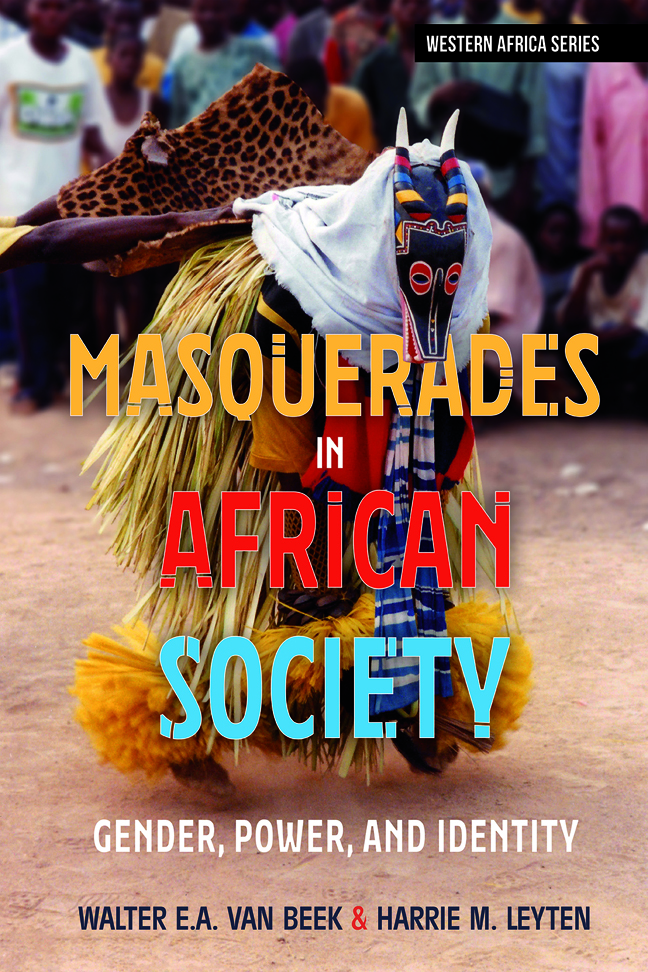Book contents
- Frontmatter
- Dedication
- Contents
- List of Illustrations
- Acknowledgements
- Introduction
- The Mask Crescent: Distribution of Masks and Masking in Africa
- 1 Mask Distribution and Theory
- 2 What is a Mask?
- 3 Masks and Masculinity: Initiation
- 4 Secrecy and Power
- 5 Death and its Masks
- 6 Women: Pivot of the Masks
- 7 Masks and Politics
- 8 Masks and the Order of Things
- 9 Masks and Modernity
- 10 Memories of Power, Power of Memories
- 11 Conclusion
- Bibliography
- Sources for Ethnographic Cases
- Picture Credits
- Index
1 - Mask Distribution and Theory
Published online by Cambridge University Press: 22 February 2024
- Frontmatter
- Dedication
- Contents
- List of Illustrations
- Acknowledgements
- Introduction
- The Mask Crescent: Distribution of Masks and Masking in Africa
- 1 Mask Distribution and Theory
- 2 What is a Mask?
- 3 Masks and Masculinity: Initiation
- 4 Secrecy and Power
- 5 Death and its Masks
- 6 Women: Pivot of the Masks
- 7 Masks and Politics
- 8 Masks and the Order of Things
- 9 Masks and Modernity
- 10 Memories of Power, Power of Memories
- 11 Conclusion
- Bibliography
- Sources for Ethnographic Cases
- Picture Credits
- Index
Summary
Masking zones
The incidence of masks and masquerades across the contininent, as shown in the maps in the previous section, highlighted a surprising pattern in masking activity: although few objects are as ‘African’ as masks, most African cultures do not have masks at all, just as most African countries do not house masquerade traditions. Mask rituals are found in what we shall call the ‘Mask Crescent’, a broad, band-like area running from Senegal eastwards over the whole width of the subcontinent, and then curling downward around the Bight of Biafra, as far as the eastern limits of the Congo Basin, plus a sprinkling in East Africa. The Crescent is not continuous and consists of three distinct zones: West Africa (Zone 1), West-Central Africa (Zone 2) and Central-East Africa (Zone 3), each with its own characteristics. Our theory addresses all three zones, yet each of them shows its own configuration of explanatory factors and particular masking habitus, while the interruptions in the Crescent are crucial elements in our explanation. Occasionally these interruptions have been noted in the literature, especially their absence in the Ghanaian region, which has been dubbed the ‘Akan Gap’.
In 1988 Sidney Kasfir remarked: ‘There have been unsuccessful theories to correlate African masking with language, ecology, and with ancestral forms of religion.’ In our quest to solve that quandary we need both the general overview map and the precise distribution maps for each of the masking zones, but this entails some methodological considerations. Plotting societies on maps inevitably implies a yes–no answer to the question of whether mask rituals are present, which tends to efface internal variation. For instance, mapping does not account for the relative importance of masks on the ground, since the position of masking in societies that have masquerades can vary widely. In practice the relative importance of masks in rituals forms a continuum: from marginal masking, where a few rituals feature a single mask, to intense masking where most rituals revolve around a host of masks, with all intermediate positions. Also the individual histories of specific masking types fall beyond the scope of our map. The same holds for the difference between fully functioning masquerades and extinct ones; in quite a few cases, masks are on the verge of disappearance, or have now disappeared, while even in ethnic groups that do have mask rituals, not all villages may have them.
- Type
- Chapter
- Information
- Masquerades in African SocietyGender, Power and Identity, pp. 13 - 46Publisher: Boydell & BrewerPrint publication year: 2023



